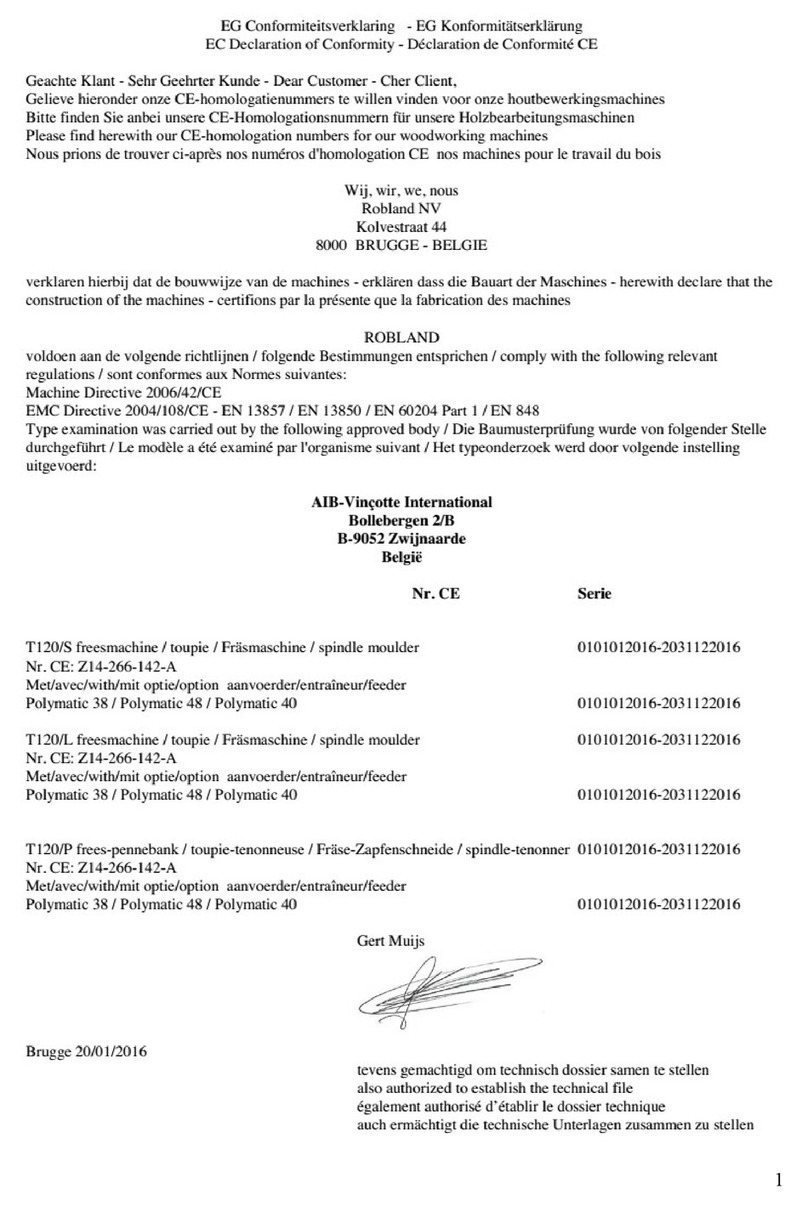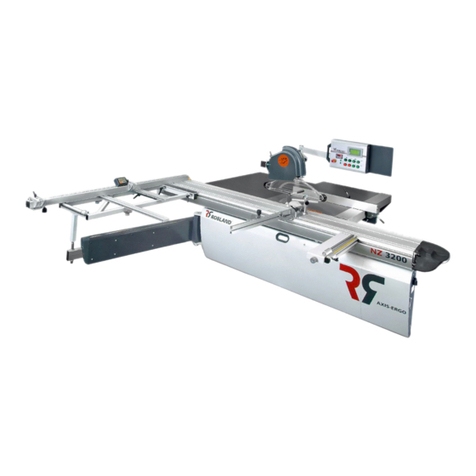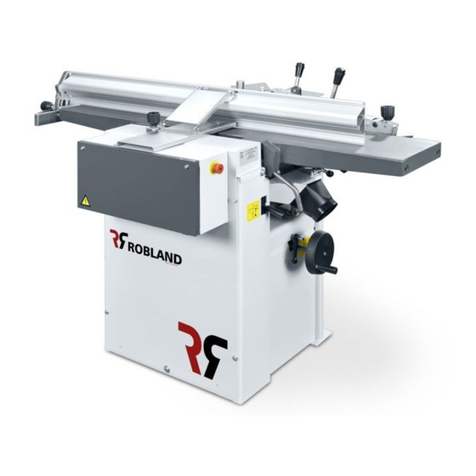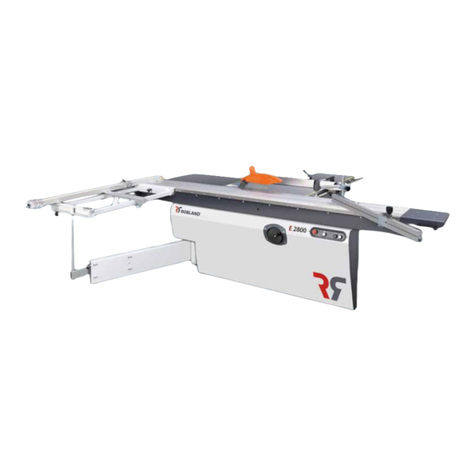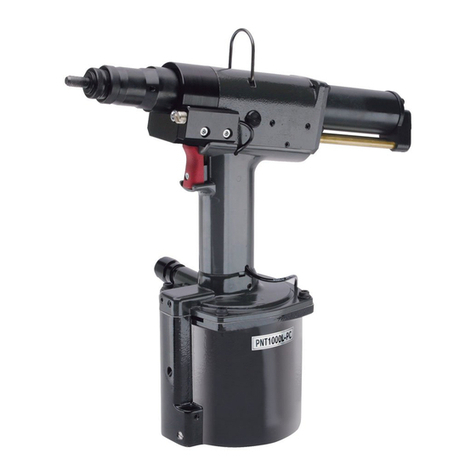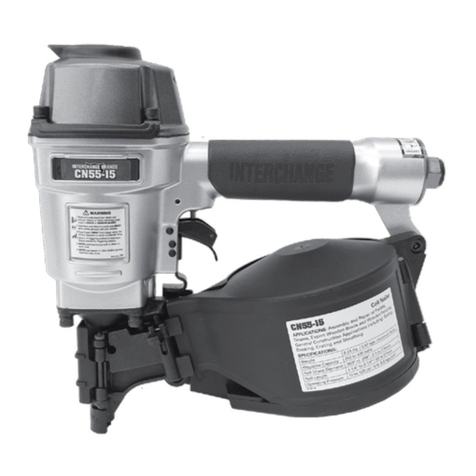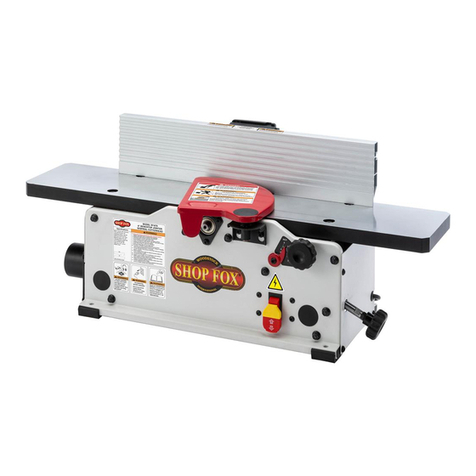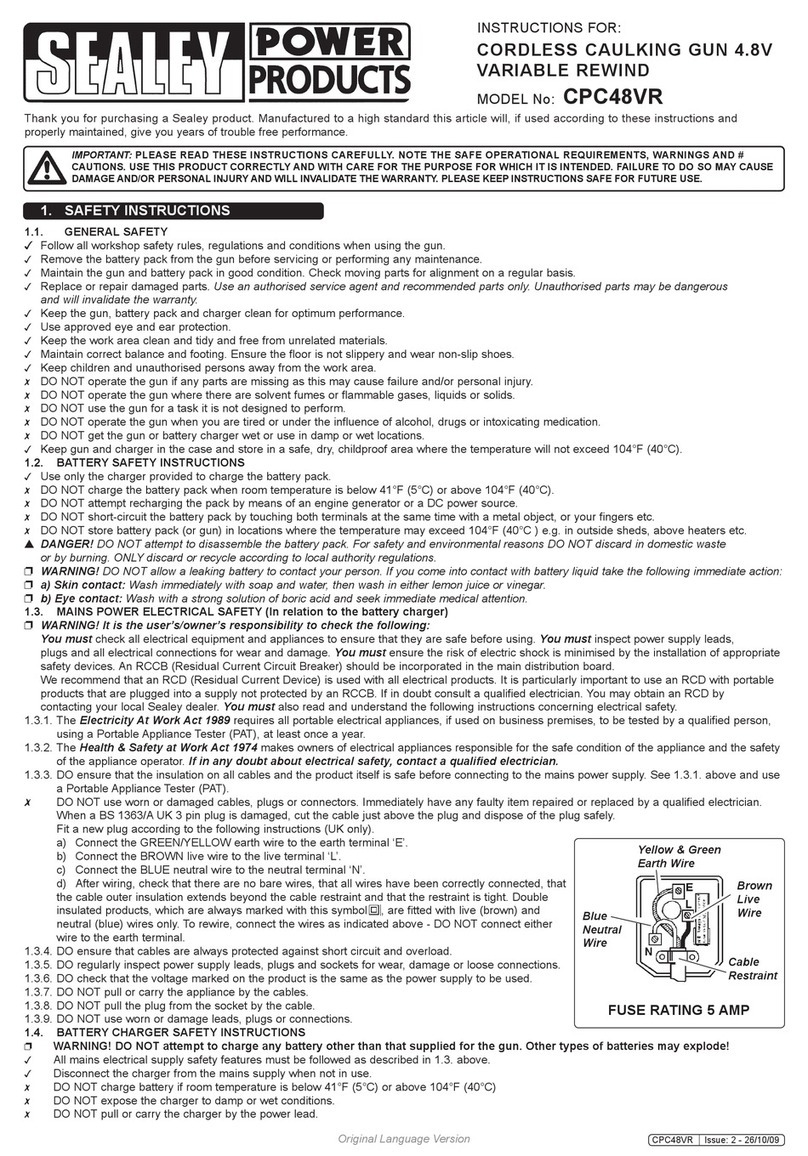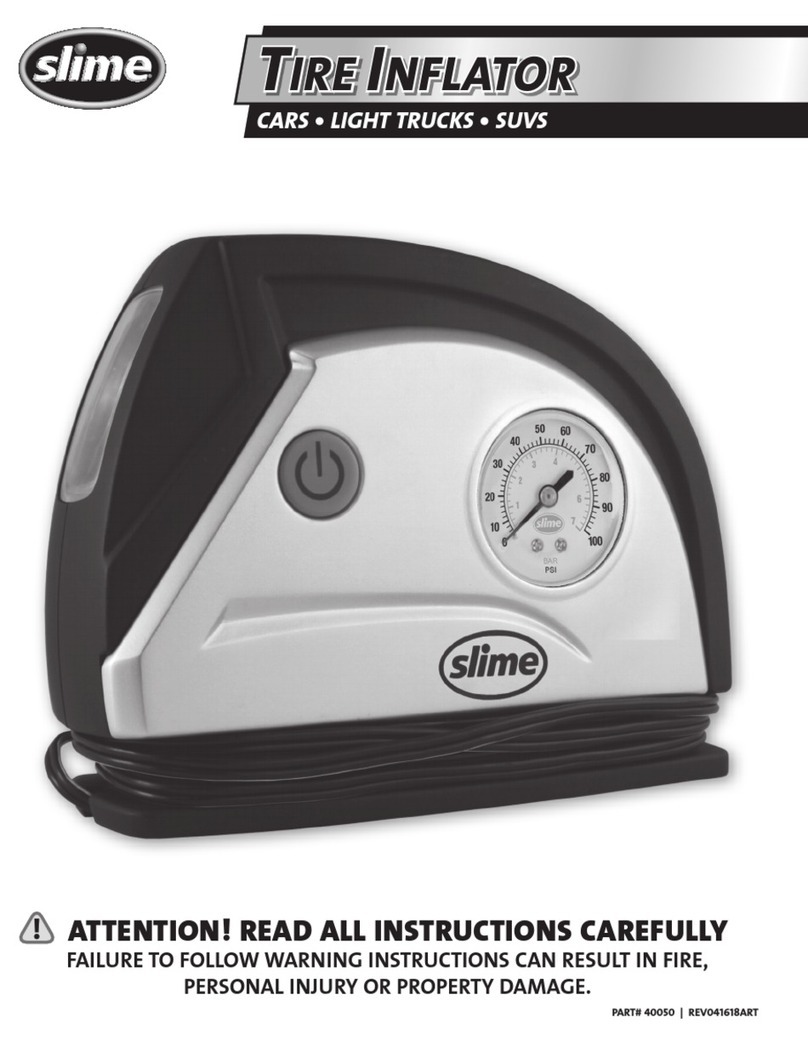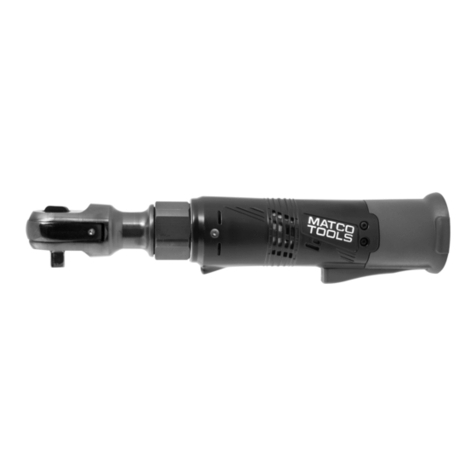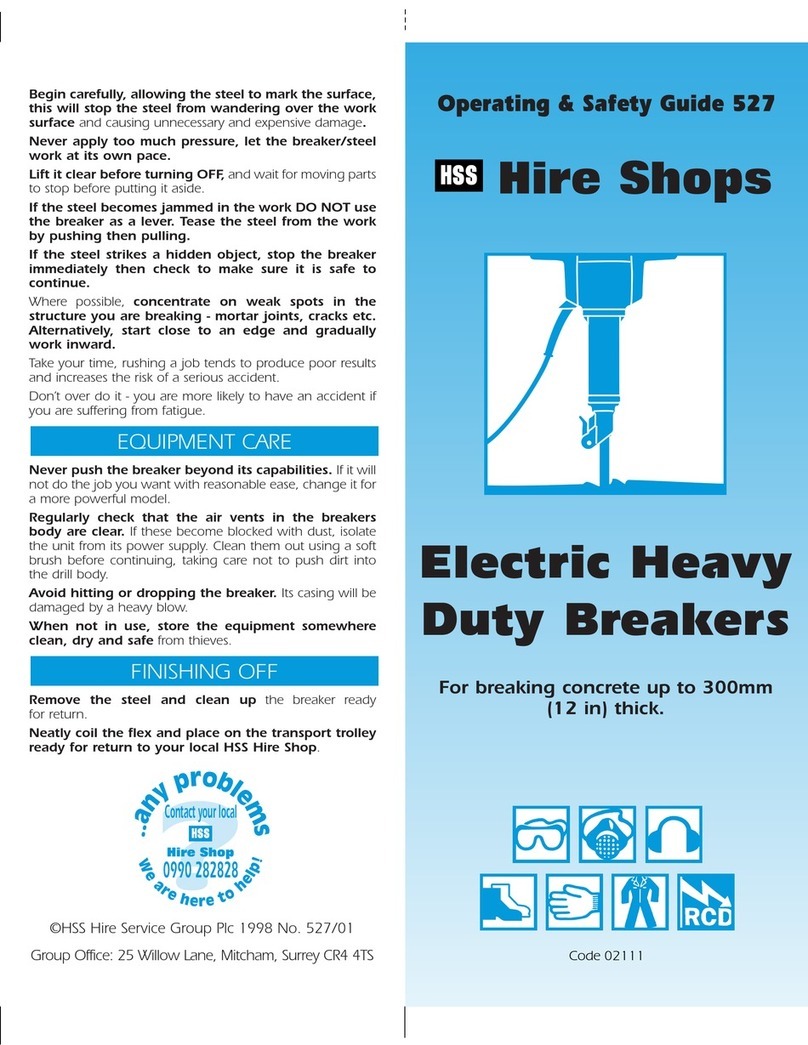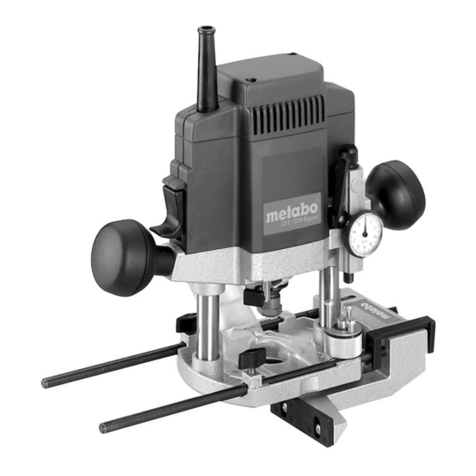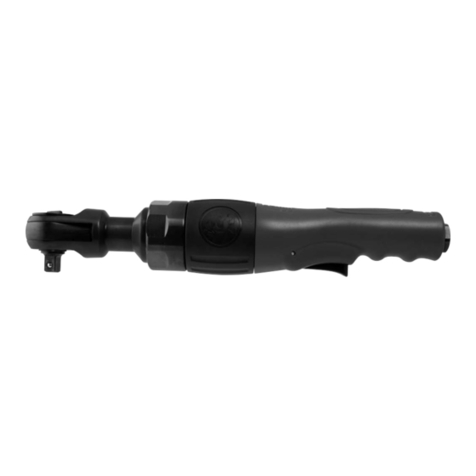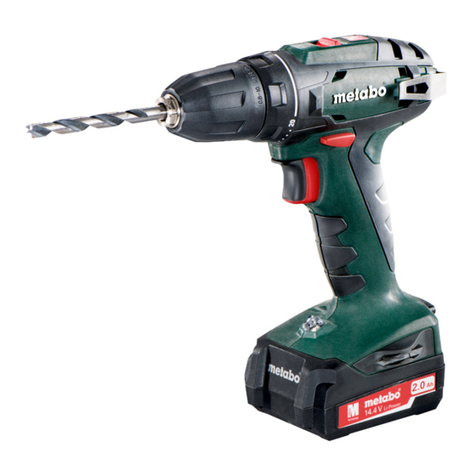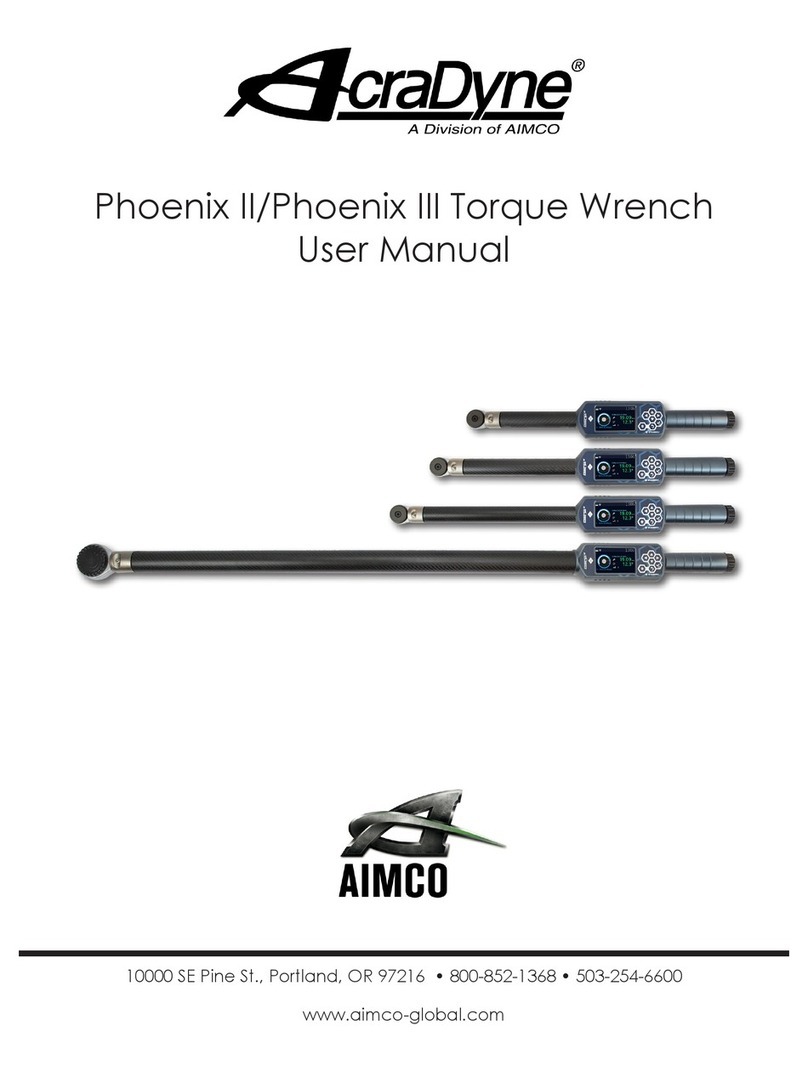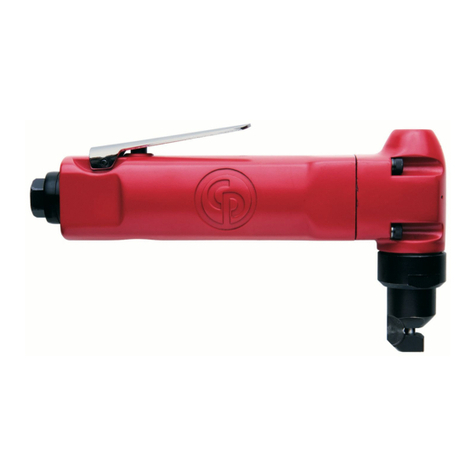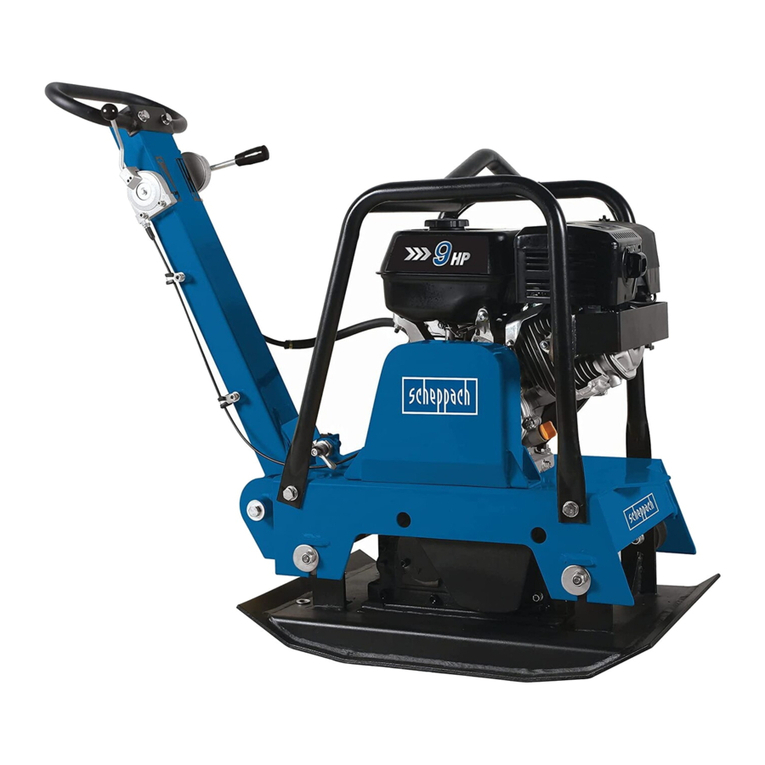Robland Z-3200 User manual

Z3200 10-V1011 1
–English–Deutsch
Index
General information 2
Important instructions when ordering spare parts 3
Attention 3
Safety and maintenance instructions 3
Danger list 3
Operating instructions 4
Normal and prohibited use 5
Explanation of accoustic and dust emission levels 6
Technical data 7
Transportation of the machine 8
Electrical connection 9
Mounting of the sliding table 10
Starting up the machine 10
Changing main sawblade and scorer sawblade 11
Use and adjustment of the riving knife 12
Lower sawblade cover 12
Height setting of main saw and scorer sawblade 13
Tilting of the saw unit 13
Lateral adjustment of the scorer blade 14
Operating the sliding table 14
Maintenance and lubrication of the sliding table 15
Mounting of the cross-cut table 16
Mounting of the 90° cross-cut fence 16
Calibration of the scale on the cross-cut fence 17
Mitre fence 18
Use of the parallel fence 18
Calibration of the scale on the parallel fence 19
Mounting of the roller support 19
Overhead sawguard 20
R.P.M. indicator lights 20
Belt tension and speed changing 21
Maintenance of the machine 22
Problems : causes and solutions 22
Option A5216: Retro-t digital read-out for parallel fence 23
Option A5218: Digital read out for cruss cut fence 25
Electrical components spares list and order numbers 26
Electrical diagrams 51
Exploded views 55

210-V1011 Z3200 Z3200 10-V1011 3
–English–Deutsch
–English –Deutsch
Important instructions
when ordering spare parts
Always mention the following items on your order :
- Type of machine
- Serial number from manual
- Part number and quantity
- Your reference and correct phone and fax number
Attention
Working with woodworking machines can be extremely dangerous if the safety instructions are not
followed. It is recommended you systematically use the safety equipment installed on the machine.
Safety and maintenance instructions
Woodworking with machinery is a pleasant job that will give you a lot of satisfaction. Nevertheless,
working with a machine requires constant attention and care. Therefore, for your own safety, pay
attention to the instructions summarised in this chapter.
- The machine can only be used safely if the operator strictly follows the operating and safety
instructions.
- It is absolutely essential to read this manual before using the machine so you know how the
machine works and what its limitations are.
- Always make sure that all safety devices are tted to the machine and that the machine is
connected to a dust extraction system.
Also provide sufficient space around the machine and good lighting in the workshop.
- When changing the tools or when doing a maintenance job, the machine must always be
disconnected from its power supply.
- Knives and tools which are not correctly sharpened or are in bad condition not only diminish the
quality of the work, but also increase the risk of accidents.
- Always wear suitable clothing. Loose or torn clothes are very dangerous.
- Keep children away from the machine and the workshop.
- To avoid damaging your hearing we recommend you wear ear protection when working with the
machine.
Danger list
This list was based on parts 1 and 2 of EN 292 and annexe A of part 2.
General information
Name and address of manufacturer NV WERKHUIZEN LANDUYT
Kolvestraat 44
8000 Brugge
BELGIE
The model has been examined by the following organisation :
L’INSTITUT NATIONAL DE RECHERCHE ET DE SECURITE I.N.R.S.
Avenue de Bourgogne - BP 27 - F54501 VANDOEUVRE CEDEX - FRANCE
Description of the machine :
Panelsaw Z3200-Z2500-Z1700
Date of construction of the machine : from 1993 on

410-V1011 Z3200 Z3200 10-V1011 5
–English–Deutsch
–English –Deutsch
Normal and prohibited use
The panel saw is designed for the following work and is equipped with protective devices for
these processes only.
It is not designed to work materials such as ferrous or non-ferrous metals, work different from that
stated below is prohibited.
- Ripping with the parallel saw fence with/without the sawblade tilted and the fence upright or in the
low position.
- Right-angled or mitre cuts with the 90° fence mounted to the sliding table with tilted or vertical
sawblade.
- Cross-cutting workpieces using the adjustable stop on the 90° fence.
- Cutting panels or solid wood on the sliding table.
PROHIBITED USE
Following tasks are prohibited on the panel saw :
- submerged cuts by removing the riving knife and/or guard;
- all types of cuts without using the table saw fence, the 90° fence or sliding table;
- Cutting large workpieces that exceed the machine capacity without using aids such as roller
supports.
REMAINING RISKS
Main risks on the panel saw are :
- unintentional contact of the hand with the running sawblade;
- workpiece kickback
- tipping of the workpiece due to insufficient support.
NOISE REDUCTION
- The type and condition of the sawblade is important in keeping the noise level as low as
possible.
- The material and the position of the safety devices are important in reducing the noise level.
- Using the correct speed of the sawblade for the type of material will reduce the noise level as well.
- The above does not negate the fact that extra safety equipment such as ear protection must be
used.
Operating instructions
The following recommendations for safe working procedures are given as an example, on top of all
information characteristic of this machine.
- When working with the machine, safety equipment must be used.
- Nevertheless, the user must also follow the operating instructions to avoid accidents.
1 Training of machine users
It is absolutely essential that the panel saw user receives thourough training regarding operating and
adjusting the machine.
In particular :
a) the risks involved in working with the machine;
b) the operating principles, the correct usage and adjustment of the machine;
c) the correct choice of the tools for each operation;
d) the safe handling of parts to be processed;
e) the position of the hands in relation to the sawblade;
f) storing the workpieces safely before and after sawing them.
2 Stability
In order to be able to use the machine safely, it is essential to place it stable on the ground or other
stable surface.
3 Adjustment and installation
a) Disconnect the machine from the power supply before every adjustment.
b) The recommendations of the manufacturer must be followed when adjusting and installing the
tools.
c) The tools must be suited to the material being cut to assure safe and efficient sawing.
The tools must be correctly sharpened and installed.
4 Handling of tools
In order to avoid severe cuts, safety measures must be taken when handling the sawblades.

610-V1011 Z3200 Z3200 10-V1011 7
–English–Deutsch
–English –Deutsch
Explanation of accoustic levels
The values given are the emission levels; these are not necessarily the levels at which the operator
can work safely.
Although there is a link between the emission values and the exposition level, it cannot be used in a
reliable way to determine if supplementary measures should be taken.
Noise iNformatioN
- measurements : as per ISO norm 7960
- as per annexe D
Workpost under load
Level continuous
accoustic pressure as
per index A
dB (A)
Level accoustic
power
dB (A) (MW)
Max. value accoust.
pressure as per index
C (instantaneous)
dB
Saw 91 105 (26,3) < 130
The dust emission examination was carried out by the following approved body :
Prünstitut für Holzstaubmessungen
Institut für Werkzeugmaschinen
Universität Stuttgart - Germany
Measurements as per DIN 33 893 (GS-HO-05)
Measurement values show that the TRK-value of 2 mg/m3 has not been exceeded.
Notication number and date : 08.03.1996/FPH-AZ : 029/95
Technical Data
Voltage V 220 - 380 - 220 mono
Motors three phase KW 4-5,5, Option 7,5
Saw diameter min.-max. mm 300-400
Max. depth of cut (dia. 400 min) mm 125
Max depth of cut at 45° mm 100
Tilting of main saw 90° - 45°
Max. cut capacity on right side mm 1380
Saw stroke mm 3200-2500-1700
Saw arbor diameter mm 30
RPM main sawblade 3000-4000-5000
Motor power scorer KW 0,5
RPM sawblade scorer 7000
Scorer diameter mm 120
Max depth of cut incisor mm 4,5
Tilting of scorer 90° - 45°
Sliding table dimensions mm 3200-2500-1700x400
Saw table dimensions mm 1530x700
Diameter outlet mm 120 - 60
Net weight Kg 1150-1050-1000
Gross weight Kg 1200-1100-1050
Packing dimensions (LxWxH) Z3200 mm 2270x1330x1020
+ 3250x450x200
Packing dimensions (LxWxH) Z2500 mm 2270x1330x1020
Packing dimensions (LxWxH) Z1700 mm 2270x1330x1020

810-V1011 Z3200 Z3200 10-V1011 9
–English–Deutsch
–English –Deutsch
Electrical connection (Fig.3-4)
The electrical connection must be carried out by a qualied electrician who is able to calculate exactly
the required wire cross-section and capacity of the workshop fuses.
Check that the main voltage of the machine corresponds with the voltage supply to your workshop.
Now open the electrical switch panel and introduce the cable. Connect the 3 phases to the
terminals on the connection block marked L1, L2, L3. If there is a neutral conductor (blue)
it must be connected to the terminal N.
Connect the earth wire (green-yellow) to the terminal marked with the earth symbol PE.
atteNtioN :
- Check rst if the saw spindle runs freely and if all safety devices are tted before starting the
machine.
- If the direction of rotation of the sawblade is not correct, the wires L1 and L2 must be switched
(clockwise direction of the spindle is correct).
- For safety reasons this must only be done without the sawblade on the spindle !
thermal overloads
The machine has overload protections on both saw and scoring motors. Should the motor be shut-off
by one of these protectors, it is necessary to wait a few minutes untill the overload has cooled down.
Transportation of the machine (Fig.1-2)
You will receive the machine in a crate made of heavy duty particle board panels, which can be easily
recycled. After removing the sides and top panels of the crate, steel bars or rods can be placed in the 3
holes in the machine frame (1).
By using hoist equipment the machine can now be lifted with a small crane of forklift truck, but severe
jolts must be avoided. When the machine is placed on the ground, it is still possible to move it by
removing the front cover plate and placing a hand pallet truck in the two openings in the front of the
frame (2).
The machine must be leveled in both directions to assure good sliding motion of the sliding table.
Two leveling bolts must be placed before the machine is placed on the oor : one bolt under the pivot
of the telescopic arm and the second under the electrical switch panel.
These bolts have to be set with the bolt head upside down. The two big leveling bolts (2) can be
reached by opening the machine access door. If possible, the machine must be placed on rubber
plates which act as shock absorbers and reduce the noise level.
1
Fig.3
1
3
2
2
Fig.1 Fig.2
Fig.4

10 10-V1011 Z3200 Z3200 10-V1011 11
–English–Deutsch
–English –Deutsch
Changing main sawblade
and scorer sawblade (Fig.7-8)
Warning : Before changing sawblades always turn off the main switch.
Handle sawblades with care, to avoid serious cuts and injuries.
Push the sliding table to the rear and open the saw cover. Raise the main sawblade to its
highest position and put the key(3) into the saw arbor nut.
Put the locking pin (2) in the opening of the sawtable and turn the arbor with the key (3) until the
locking pin (2) engages in the hole in the saw arbor pulley.
Now unlock the nut. Before tting the new sawblade ensure the blade and anges are clean. This
prevents wobbling of the sawblade.
Never forget, after the saw arbor nut has been tightened, to remove the locking pin from the pulley
before starting up the motor.
atteNtioN :
Only sawblade diameters from 250 to 400 mm are allowed on the machine.
The use of HSS sawblades is strictly forbidden on all panelsaws; only use carbide-tipped
sawblades.
The scorer sawblade is changed as follows : turn the scorer blade to the left and put the key (1) onto
the atened arbor. Loosen the bolt with the Allen key (2) and put the scorer blade on. After changing
the blade tighten the bolt.
WarNiNg :
All main sawblades which are used on the panel saw must have two additional holes in the sawblade
body, to prevent the sawblade from loosening when the rotation of the saw arbor is stopped by the
brake on the motor.
The two little bolts in the xed saw arbor ange prevent the saw from coming off and may
under no circumstance be removed.
Mounting of the sliding table (Fig.5)
The position of the sliding table relative to the machine is factory set and needs no further
adjustments.
Simply put the table onto the frame with the two lateral adjustment bolts (1) in the two lugs placed at
the side of the frame.
These lateral adjustment bolts (1) are also factory set and normally need no adjustment.
Now place the 4 big Allen bolts (3) into the lower section of the sliding table. Ensure the table from
ipping over when sliding away the upper section of the sliding table.
These 4 bolts need to be well tightened.
The 8 small adjustment bolts (2) are height setting bolts set at factory. To ensure a clean and neat cut
the sliding table has to be set 100 % parallel to the sawblade.
To correct the parallelism between sliding table and sawblade, unlock the 4 big Allen bolts (3) and
adjust with one of the two parallel adjustment bolts (1).
After adjustment tighten the 4 big Allen bolts.
Starting up the machine (Fig.6)
Turn the main switch (1) to “1” and ensure that the star-delta switch (3) is put in position “star”.
To start the main saw motor push the start button (4). After about 8 seconds put the star-delta switch
(3) in position “delta”.
This time delay is needed to let the motor gain its full speed before switching over to “delta”.
When you forget to switch over from “star” to “delta”, the motor will reach its full speed but will have no
power, and will be damaged. The scorer motor is started by pushing the start button (6); this is only
possible with the main saw motor running.
By pushing the stop button (7) the scorer motor is stopped, when the emergency stop button (5) is
pushed both motors are stopped.
The main saw motor is equipped with an automatic brake which slows down the motor within 10
seconds as soon as the machine is shut off.
WarNiNg :
When the machine access door is open, it is impossible to start up the machine.
The RPM indicator lights at the front of the main switch panel show the speed of the saw spindle as
soon as the machine is switched on with the main switch (1).
All fuses can be found inside the electrical switch panel and each time this panel is opened the
machine has to be disconnected from its power supply.
Fig.5
Fig.7
1
21
2
3
1
Fig.6
Fig.8
4 5 3 6 7 1
2
2
2
3

12 10-V1011 Z3200 Z3200 10-V1011 13
–English–Deutsch
–English –Deutsch
Use and adjustment
of the riving knife (Fig.10)
The machine is equipped with two riving knives for the use of sawblades from 250 to 300 mm and 350
to 400 mm.
The riving knife has to be adjusted in such a way that over its entire length the gap between sawblade
and riving knife does not exceed min.3 mm and max.8 mm.
The riving knife can be adjusted in both vertical and horizontal direction.
The height setting has to be adjusted in such a way that the highest point of the riving knife never
exceeds more than 3 mm above the highest placed sawblade tooth.
After height adjustment always lock the central bolt (3) at a torque of 60 Nm. The 3 little adjustment
screws (2) are used for the exact setting of the riving knife in line with the sawblade.
For slotting or grooving the riving knife has to be adjusted in such a way that the upper part of the
riving knife is never set lower than the highest sawtooth in use.
Never remove this riving knife. Kickbacks are severe and very dangerous.
Lower sawblade cover (Fig.10 bis)
The lower sawblade cover has an extra safety device which will protect the user during sawblade
changing.
To open the lower cover the upper part of the sliding table has to be slid to the back.
Now the two locks can be opened at both sides of the cover and the safety lever can be pulled up.
Only now can the sawblade cover be opened and this safety device prevents the table from being
pushed to the front, which would result in injuries to the operator’s hands.
After closing the lower cover push down the safety lever (1).
Height setting of main sawblade
and scorer sawblade (Fig.11)
Main sawblade height setting is done by turning the handwheel (1). After the sawblade is set at the
desired cutting depth the handwheel has to be locked with the locking knob (2).
One turn of this handwheel equals 5 mm of height setting.
The height setting of the scorer sawblade is done by turning the knob (4), and locked by
turning the wheelnut (3). One turn of this height setting knob equals 3 mm.
The maximum cutting depth using a main sawblade diameter of 400 mm is 125 mm and for the scorer
4,5 mm using a sawblade diameter of 100 mm.
Tilting of the sawunit (Fig.12)
By turning the handwheel (2) the whole sawunit can be tilted and set at any angle between 90° and
45°. After setting, lock the sawunit in this position using the locking knob (1).
The angle can be read at the large scale (3).
Both 45° and 90° positive stops are factory set and need no adjustment. After setting the
sawunit at the desired cutting angle the cutting depth of the scorer must be set again.
Fig.10
Fig.11
Fig.10 bis
Fig.12
1 1
3
3
1
1
4
2
176
5
2
3
Min 3, max 8 mm

14 10-V1011 Z3200 Z3200 10-V1011 15
–English–Deutsch
–English –Deutsch
Lateral adjustment
of the scoring blade (Fig.13-14)
Each time the main sawblade is replaced by a new one, or even a newly sharpened sawblade, the
scorer has to be adjusted to match the main sawblade teeth width. It is very important that this is done
in the correct way to ensure a clean cut, free of splintering.
The use of two piece scoring saws is best because they can easily be adjusted using spacer rings.
The lateral movement of the scorer sawblade is achieved by turning the knob (g. 11,5) and the locking
(g. 11,6).
After the lateral adjustment is done the scale (g. 11,7) has to be set at “0”.
Figures 13 and 14 show the different possibilities :
1) Without the use of a scorer saw
2) Correct setting of the scorer saw but too deep
3) Too much to the right side
4) Correct setting of the scorer saw.
Blocking the sliding table (Fig.15)
Blocking the sliding table (Fig.14)
- The sliding table can be blocked in two positions and with one block-system. This is vital for
example by loading of the boards or cutting along the parallel guide. The system is located on the
front-side of the sliding table. Pull the button (1) in your direction and turn to the right to liberate the
table. Pull the sliding table till end, the table will be blocked automatically when arriving in the exact
position. Continue this way to start working.
- When several movements are repeated consecutively, it is possible that the bearing cage between
the two proles moves a little bit. We can note this as well by a reducing travelling distance of the
sliding table. To proceed and achieve the normal travelling distance of the sliding table, you can
adapt the position of the bearing cage: simply push the table with a few short, light pushes against
the buffer stop at the end of the sliding table until the position of the ball carrier is adjusted and the
table can be moved again along its full stroke.
Attention: cleaning and maintenance of the sliding table
It is vital to regularly blow away the saw- and other dust, collected between the sliding table
and the bearing cage. Push the sliding table to the end, to get a better reach towards the rails,
the bearing cage and gliding tracks. Oil serves to lubricate the sliding rails and is an extra
guarantee of good use and function.
Maintenance and lubrication
of the sliding table
It is highly recommended to clean the sliding table once a week, and to remove all sawdust and chips
which gradually slow down the sliding table. From both sides of the sliding table blow out the dust
accumulated between the two sections and on the ball carrier.
This can be done more easily and efficiently when the upper part of the sliding table is slid to the rear,
and must then be repeated with the upper part at the front end.
After all dust has been blown out, a thin oil with a teon base or plain diesel oil should be sprayed onto
the steel V-liner strips on both the upper and lower part of the sliding table. Never use a thick oil or
grease ! This maintenance job will only take 10 minutes of your time, and will ensure the
machine gives full satisfaction.
1
2
3
4
NOT CORRECT
CORRECT
Fig.13
Fig.15
Fig.14

16 10-V1011 Z3200 Z3200 10-V1011 17
–English–Deutsch
–English –Deutsch
Mounting of the cross-cut table (Fig.17)
The cross-cut table can be slid from the back to the
center of the sliding table via the flat bar on the side
of the sliding table.
The 2 brackets (2) should be positioned to allow the
cross-cut table to be easily moved along the
sliding table. The table must be locked in position
using handle (1).
Please note that the machine is constructed so that
the cross-cut table can be moved to the middle of
the sliding table only.
The telescopic arm support is too short to allow the
cross-cut table to be set at the front of the sliding
table. Both telescopic arm and cross-cut table are
factory set and need no adjustment.
Mounting of the 90° cross-cut fence (Fig.18)
The cross-cut table has 4 precision holes allowing the fence to be put in 2 positions : at the back and
front of the cross-cut table. Simply put the fence onto the cross-cut table and lock it in position using
the two serrated nuts (1).
The 90° right angle of the fence is factory set. Should the 90° angle need to be adjusted, then the
two bolts (2) must be loosened; then by turning the little bolt (1), the angle can be opened or closed
towards the sawblade. After adjustment the bolts (2) have to be retightened.
Calibration of the scale
on the cross-cut fence (Fig.19-20-21)
Each time a new sawblade is put onto the machine the scales have to be calibrated.
Put the first repetition stop (1) at a certain measure and cut off a sample.
Measure the exact length of the sample, unlock the screw which holds the scale and move the scale
until the exact length corresponds with the index on the repetition stop.
Now the scale on the telescopic part of the fence (fig.20,2) has to be adjusted to the first scale.
When using the telescopic extension, the second repetition stop (3) has to be set at 1925 mm
to make the different scales correspond with one another. The best way to check if all scales
correspond is to make several test cuts on the different scales.
When, after some time, the wooden protection cap at the front on the cross-cut fence is cut away, a
new one has to be made according to diagram fig.21..
Fig.17
Fig.18
Fig.19
Fig.21
Fig.20
1
1324
1
23
2

18 10-V1011 Z3200 Z3200 10-V1011 19
–English–Deutsch
–English –Deutsch
Mitre fence (g.22)
The at T-nut which holds the vertical rod of the wood clamp is factory set and has to stay in its position
to make the angle scale correspond.
To set the required angle : unlock the rod (1) and the auto-release handle (2). To slide the
fence (5) towards the sawblade, unlock the two handles (3). Reading the angle set is done at the back
of the aluminum bracket (4).
Use of the parallel fence (g.23)
When the serrated knob (3) is unlocked and the handle (1) is lifted up, the complete parallel fence can
be moved.
To lock the fence in position push the handle (1) down.
The micrometric adjustment is achieved by locking the knob (3), by holding the handle (1) in the
upright position and by turning the serrated knob (2).
After the adjustment push handle (1) down to lock the fence in place. When cutting small workpieces
with the sawunit inclined at 45°, the fence should be used in the low position.
Simply unlock the eccentric clamping handle (4), slide off the fence and slide it back on in the low
position.
Lock the fence with the eccentric clamping handle (4).
When cutting solid wood using the parallel fence, to avoid the wood getting stuck between the fence
and the riving knife (resulting in a hightly dangerous kickback) it is recommended to
reposition the fence so that its end protrudes just past the end of the riving knife.
Calibration of the scale on
the parallel fence (g.24)
Each time a new sawblade is tted the parallel fence scale has to be calibrated to the new
sawblade.
By cutting a sample and measuring its exact length, the scale can be adjusted so that the exact
measure corresponds with the front side of the fence.
After the screw (1) has been loosened the scale can be adjusted. To avoid the fence contacting the
sawblade while it is revolving, the stop ring (2) has to be adjusted.
Slide the fence to about 10 mm from the sawblade.
Now slide the stopring (2) across the round guide bar (3) until it comes up against the
casting of the fence. Tighten the lock screw on the stop ring.
Mounting of the roller support (g.25)
Put the hinge plate (1) of the roller support onto the frame using the bolts (2). The roller has to be
adjusted to the height of the saw table using the lower stopring.
The whole support can be lowered and can be swung aside after opening the knob (4). If the roller
support has to be taken off, simply lift it off its hinges.
Fig. 22
Fig. 24
Fig. 23
Fig. 25
1
5
4
3
3
2
1
4
2
2
2
1
2
1
3
3
4
5
2

20 10-V1011 Z3200 Z3200 10-V1011 21
–English–Deutsch
–English –Deutsch
Overhead sawguard (Fig.26-27)
According norms and applicable prescriptions, the sawguard always should be positioned, just
allowing the passing of the wood or work pieces.
The adjustment of height can be done with the handle (1 and 2), using the previously adapted
graduated scale (3). The guard can not go under the denite measurement. Allowing to block the
protection to avoid it goes up on its own. The handle (2) as well serves as a height stop to avoid that
the protection goes up to high according to the handled work piece.
The guard has got a shifting skirt, remove the screw (1) then the little skirt and place the larger one,
closing again with the screw.
Attention: it is evident that for special tasks, it is necessary to make or build specic protection.
RPM indicator lights (Fig.28)
After the machine has been switched on by the main
switch, the indicator lights at the front electrical panel
show the speed of the saw arbor. When changing
speed always take care that the indicator detector
(1) is placed in the correct position, to avoid the belt
rubbing against the detector, leading to a premature
wear of the belt.
This can be felt and seen.
The machine has 3 RPMs : 3000 - 4000 - 5000.
Belt tension and speed changing (Fig.29-30)
maiN saWbelt :
Always choose the speed accordingly the sawblade diameter and never exceed the maximum
allowed cutting speed for carbide tipped sawblades of 100 m/sec.
This is a very important safety rule.
To loosen the belt, pull and turn handle (1) to the left. When the belt has been changed or put in
another groove of the pulleys and the indicator detector (2) has been checked for its correct position,
the belt has to be tensioned. Pull and turn the handle (1) to the right and engage it into the serrated
span sector. (3)
Make sure the belt is not overtensioned, because this leads to damage of the saw arbor and belt.
Check regularly the condition of the belt and, if necessary, replace it (partnr. N8207 : XPA 800
Quadpower).
scoriNg saWbelt :
To tension the scoring sawbelt loosen the two nuts (1-2) which hold the motor, push the
motor down, tighten the two nuts while holding the motor down.
To change the belt remove the motor completely. When the belt is replaced, but before
tensioning it, ensure that it is correctly seated into the grooves of both pulleys.
Fig.29 Fig.30
Fig.28
5000 RPM
4000 RPM
3000 RPM
31
2
1
2
Fig.26 Fig.27

22 10-V1011 Z3200 Z3200 10-V1011 23
–English–Deutsch
–English –Deutsch
Maintenance of the machine
The interior and exterior of the machine have to be cleaned regularly to avoid an accumulation of dust
and woodchips.
Any deposition of resin on the sliding table and other surfaces has to be removed.
Never smoke while cleaning the machine, and especially when using petrol, kerosene or other
inammable products. This could lead to an explosion and serious burns for the operator.
All moving parts have to be kept clean and have to be lubricated with a little very thin oil,
diesel or penetrating oil.
All bearings in the machine are double sealed and need no lubrication. The use of a dust
extraction system will most certainly extend the life of your machine.
The lifetime of the motors can be extended by blowing out sawdust from the cooling fan and motor
itself.
In particular the sliding table needs care and attention : see chapter “operating the sliding
table”.
Problems: causes and solutions
1 The machine does not start when the start button is activated :
- access door is still open : close the door correctly
- main fuse is switched off : power cut, power shortage or motor overload
- star-delta switch in wrong position : put switch on “star”
- main switch off : put switch on “1”
2 Reduction of speed when working :
- belt tension not correct : tension the belt
- motor overload due to incorrect feed rate : reduce the feed rate
- blunt tools : sharpen tools
3 Vibration of the sawblade or arbor :
- unbalanced tool : replace or have the tool balanced
- worn or damaged belt : replace the belt
4 Thermal overload does not re-arm automatically after shut-off and cooling down period :
- overload is not set on automatic reset or the overload is faulty
If you cannot solve the problem yourself or you do not nd your problem in this list, please contact your
Robland dealer.
Option A5216: Retro-t digital read-out
for parallel fence
Mounting instructions for panel saw Z serie
Put the digital read-out onto the parallel fence support block using the 2 holes already
drilled. On older machines these 2 holes need to be drilled.
Now put the alu prole holding the magnetic strip onto the saw table at 1 mm below the table’s front
edge.
Make sure the sensor is put in the middle of the magnetic strip, and the distance between strip and
sensor is set at 0,5 to 1 mm maximum.
Make sure the sensor stays at 0,5 to 1 mm over the entire lenght of the magnetic strip.
0,5 - 1mm max

24 10-V1011 Z3200 Z3200 10-V1011 25
–English–Deutsch
–English –Deutsch
Put the digital read-out onto the parallel fence support block using the 2 holes already
drilled. On older machines these 2 holes need to be drilled.
Now put the alu prole holding the magnetic strip onto the saw table at 1 mm below the table’s front
edge.
Make sure the sensor is put in the middle of the magnetic strip, and the distance between strip and
sensor is set at 0,5 to 1 mm maximum.
Make sure the sensor stays at 0,5 to 1 mm over the entire lenght of the magnetic strip.
The little table extension as supplied, makes it possible as before to cut upto 1380 mm.
It will also act as a protection for the magnetic tape.
Option A5218:
Digital Flip stop on the cross-cut fence
For all the machines of the series Z and NZ, the digital ip stop, an absolute measurement system for
the cross cut fence, is optional. For more information about the settings of the 90° inclination according
to the main saw blade, see “Adapting the cross cut fence”
Placing the magnetic strip
atteNtioN:
The magnetic strips of the Z-series are shorter than the magnetic strips of the NZ-series.
When placing the magnetic strip, we recommend to remove the difference, after placing the magnetic
strip correctly.
The digital read-out system is placed into the guiding rail on the cross cut fence. It is very important to
check, before changing the setting of the system, that the active mode of the system is Abs and not
Incr. To change the mode of the system press the button Incr/Abs.
Calibrating the system: Place the 300 mm long piece Z1253 against the cross cut fence reaching
exactly one saw-tooth of the main saw blade. Push the ip over stop against the former mentioned 300
mm long element Z1253. Press, at the same time, the buttons <<F>>+<<Set>>. Doing this you will see
that 300.0 appears at the display. The system is calibrated. Using the button Incr/Abs you can create a
new zero point.
When lifting up the ipper so it looses contact with the magnetic strip, the setting are saved, so it will
be unnecessary to calibrate the system each and every time again after lifting of the ipper and loss of
contact with the magnetic strip.
When not using the system, it will automatically shut down after a time period of 20 minutes. To activate
the system again, just press one of the buttons.

26 10-V1011 Z3200
–English –Deutsch
Electrical components spares list
Order n°
Q1 Main switch N 8443
F1-2-3 Fuse 10x38 mm 4-5,5KW 380V = 16A N 8537
4KW 220 3ph = 16A N 8537
7,5KW 380V = 25A N 8542
5,5KW 220 3ph = 25A N 8542
7,5KW 220 3ph = 40A -
F4 Fuse primary 10x38 mm 1A N 8454
F5 Fuse secundary 10x38 mm 2A N 8553
F Fuse holder Legrand N 8534
T1 Transformator 220-380-24V 30VA manual start N 8470
63VA auto star-delta N 8563
eb1 Thermal overload 7-11A 380V 4KW manual start N 8491
main sawmotor 4-6A 380V 4KW auto star-delta N 8474
9-13A 380V 5,5KW manual start N 8476
5-8A 380V 5,5KW auto star-delta N 8475
12-18A 380V 7,5KW manual start N 8477
7-11A 380V 7,5KW auto star-delta N 8491
12-18A 220V 3ph 4KW manual start N 8477
7-11A 220V 3ph 4KW auto star-delta N 8491
17-34A 220V 3ph 5,5KW manual start N 8487
9-13A 220V 3ph 5,5KW auto star-delta N 8476
24-34A 220V 3ph 7,5KW manual start N 8435
12-18A 220V 3ph 7,5KW auto star-delta N 8477
eb2 Thermal overload 1,4-2A 380V 0,55KW N 8469
Scoring motor 2,8-4,4A 220V 3ph 0,55KW N 8489
SE1 Micro Switch N 8506
AU1 Emergency stop N 8502
AU2 Emergency stop N 8502
CE 24V Normal
K1 Magnetic relay 4KW 380V SK11 manual start N 8457 N 8467
Main sawmotor 4KW 380V SK-R11CX auto star-delta N 8557 N 8555
5,5KW 380V SK11 manual start N 8457 N 8467
5,5KW 380V SK-R11CX auto star-delta N 8557 N 8555
7,5KW 380V SK21 manual start N 8461 N 8580
7,5KW 380V SK21 auto star-delta 3x N 8461 3x N 8580
4KW 220V 3ph SK21 manual start N 8461 N 8465
4KW 220V 3ph SK21 auto star-delta 3x N 8461 3x N 8465
5,5KW 220V 3ph SK21 manual start N 8461 N 8465
5,5KW 220V 3ph SK21 auto star-delta 3x N 8461 3x N 8465
7,5KW 220V 3ph SK25 manual start N 8566 -
7,5KW 220V 3ph SK25 auto star-delta 3x N 8461 -
K2 Magnetic relay 0,55KW 380V SK10 N 8459 N 8462
scoring motor 0,55KW 220V 3ph SK10 N 8459 N 8460
S5 Stop button scoring motor N 8480 N 8480
S4 Start button scoring motor N 8500 N 8500
S3 Star-delta switch N 8447 N 8447
S2 Start button main motor N 8500 N 8500
SE3-4 Micro switch RPM indication N 8506
L1-L2-L3 RPM indication lights 24V N 8439
Brake Normal
M1 Main sawmotor 4KW 380/660V M 353 M 352
5,5KW 380/660V M 358 M 356
7,5KW 380/660V M 386 M 393
4KW 220/380V M 351 M 350
5,5KW 220/380V M 359 M 354
7,5KW 220/380V M 384 M 394
M2 Scoring motor 0,55KW 220/380V M 1470
Table of contents
Other Robland Power Tools manuals

